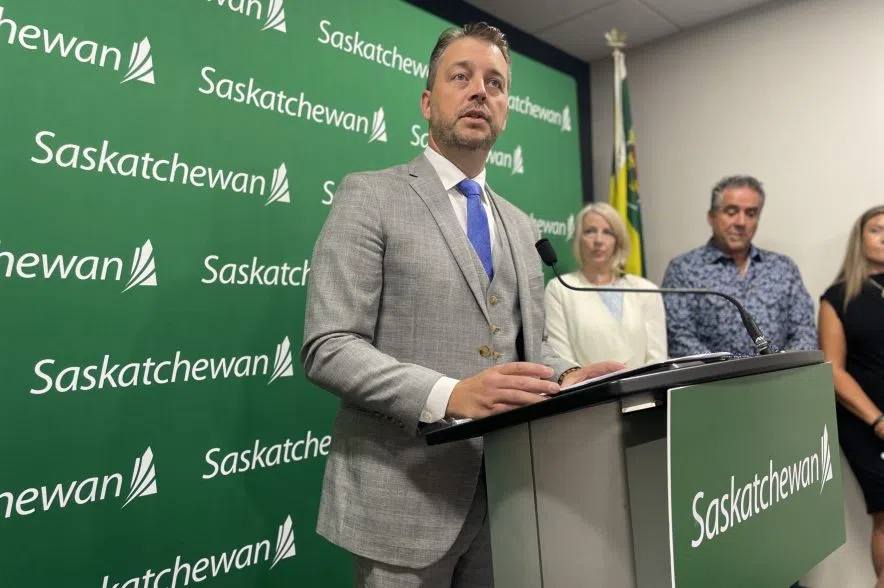Starting August 1, new legislation geared towards regulating street weapons and drugs comes into force across Saskatchewan.
The Safe Public Spaces (Street Weapons) Act will promote safety in public urban spaces by regulating the possession, transportation and storage of items that may be used as street weapons.
This includes knives, hypodermic needles, machetes and bear spray, as well as drugs such as methamphetamine and fentanyl.
Read more:
- Crop conditions improving in Saskatchewan, but more rain needed
- Sask. RCMP officers responded to 77 fatal crashes in 2024, upward trend continues in 2025
- Warnings issued over impersonation scam using Premier Scott Moe’s image
Justice Minister and Attorney General Tim McLeod said the government is committed to making sure everyone feels safe in their communities.
“When you’re posing a threat to community safety, the police now have the ability to deal with that threat before a victim is ever created,” he said.
“We don’t want somebody to have to wait until there is a victim to allow the police to make a safer environment.”
In terms of how people are targeted, McLeod said it needs to be a situation where officers are aware that someone has it on their person.
Anyone in breach of the rules of the act can be charged with a provincial offence and subject to a fine of no more than $5,000, imprisonment for up to a year, or both a fine and jail time.
However, McLeod said it’s up to police discretion, with the legislation giving them the power to determine if an item is dangerous and whether charges should be laid.
If the person thinks their item should be returned, McLeod said they can apply to get it back.
Municipalities and First Nations must choose to opt in to the new act.
“The Act further provides police enhanced powers to seize these items from people in public spaces where there is a threat to public safety, regardless of whether a charge is laid,” the government said in a release.
McLeod said communities have flexibility on what’s categorized as dangerous, since some rural communities might have more legitimate purposes to carry an axe, for example. That also extends to the length of blades. The current requirement for dangerous knives are those 30 centimetres or longer, but communities can decide to make that shorter.
“The legislation contains appropriate exemptions to ensure these items can continue to be used for their lawful purposes, such as food preparation and protection from wildlife threats, or using hypodermic needles for medical use,” the release read.
Public spaces include public buildings, parks, playgrounds and any land or building entered without the consent of the owner, common areas of condos or apartments, unoccupied land or buildings or vehicles travelling through public spaces.
“You want to make sure that you’re comfortable walking down the streets of downtown and not seeing somebody brandish an axe. It’s literally that obvious,” McLeod said.
— with files from 980 CJME’s Marija Robinson











